This story does not involve anything Italian or French, and is about a motorcycle instead of a car. Long-time contributor Eric Davison (Memoirs of Watkins Glen) has written this timely, delightful article about restoring a WWII era motorcycle designed for D-Day, and after all, it is Memorial Day weekend; next week on June 6 we celebrate D-Day. What could be more appropriate? We know you will enjoy reading of Eric’s hilarious trials and tribulations bringing his “Flying Flea” back to life. As there were only two wheels, a tiny single-cylinder engine and a basic frame, how hard could this restoration be?
By Eric Davison
I am not quite certain of why and when I became infatuated with the motorcycle with the improbable name ‘The Flying Flea!’
In thinking hard about it I have come to the conclusion that it was a seed planted in my head by my paternal grandfather Augustus ‘Gus’ Davison, an Englishman.
He and my grandmother had come to America with my dad via Canada in 1921 and returned home to England before I was born in 1934. My dad stayed in the U.S. and he and my grandfather corresponded as best as they could during the war year. My grandmother died in 1943 and Gus was planning to move back to America to live with us after the war ended. During WW2 he lived in Wimbledon and witnessed Hitler’s famous ‘Blitz’ of London, watching a great deal of it from the roof top of his apartment building. Unfortunately he died before he could leave England.
When the tides of war shifted and the D-Day invasion was in the offing I recall that he wrote my dad about the fabulous little Royal Enfield motorcycle that was going to war with British airborne troops. It was to be parachuted into the invasion zone strapped to a metal protective frame. Riders, no doubt from the Signal Corps, could use them for messenger duty. Hence the name ‘Flying Flea’ for a small, lightweight motorcycle flying into the great D-Day invasion of Normandy.
Getting the Flea Bug
Naturally, I believe that it was from his enthusiastic reportage that the idea of the Flying Flea was ignited in my brain from my grandfather to my father and on to me. I thought as a teen ager that I should have one, but two things mitigated against my ownership. One, I had no money for frivolities. Two, my mother was dead set against my having a motorcycle. She had visions of disaster.
The years passed as did my infatuation with the Flying Flea, which were pretty rare in any event. In the 1980s, I did actually see one, in a vintage motorcycle shop in Santa Monica, California. It was the military version; painted olive drab and with a white star painted on the gas tank. And, on a business trip to Detroit I found a man in an old house near Wayne University who had a treasure trove of old motorcycles including a Flying Flea. I was after something else at that time (motorcycle tires for my J2 MG) and passed on the Flea.
More years passed, I retired and moved from Manhattan Beach, California to Anna Maria Island, a Florida barrier island west of Bradenton. (Speed limit 25mph.) A Flying Flea was a long way from my radar screen.
But, one day my wife Mary, who has been complicit in all my goofy ventures, and I were driving down street in northeast Sarasota and passed a row of buildings that were a combination of storage facilities and small businesses. In front of one of the buildings was an assortment of English motorcycles. There, I discovered a man named ‘Reko’ with no other apparent name. He was tall, rangy and sported the best handlebar mustache that I have ever seen. His business was and is the restoration and maintenance of English motorcycles. He had been doing it in the same location for about 30 years.
I introduced myself and said that I was, in a half-hearted way, looking for a Royal Enfield Flying Flea. Did he ever hear of one for sale? Reko is a man of few words. He looked at me, turned away and reached into a cabinet and pulled out a Flying Flea motor. He had purchased the broken remains of the engine at a flea market and planned to one day use it as a decoration.
I asked him to get in touch with me if he ever came across one. I also asked that if I should find one, could I count on his help in making it go. ‘You bet’ he replied.
This discovery of Reko and his talents kindled me to begin the search for one in earnest. The first person I called was an old friend from California, John Stein. John is a motorcycle collector and owns a wide and eclectic bunch of bikes. Plus he knows just about all there is to know about who has what. John volunteered his enthusiastic support for my Flea search.
The eBay Flea
But, to my surprise, before I could get serious one appeared on eBay. Throwing caution to the winds I entered into the bidding and before I knew it I was the owner of a 1948 Royal Enfield Flying Flea. Naturally the bidding wars overcame me and I paid considerably more than common sense would indicate. Technically it was not a Flying Flea. It was an RE125. The Flying Flea designation was for the military versions with their olive drab paint and hooded head lamp. But, common usage now covered all RE125s; they were all Flying Fleas. Gus would have been happy.
So, now the fun began, but how hard could it be? After all the Flea has but two wheels, a simple frame and a single cylinder, small-bore motor.
I began by disassembling the Flea, seeing what was repairable and what needed replacing. The key elements of the frame, gas tank and fenders seemed to be OK. The wheels were badly pitted and needed new spokes. The gas tank had no dents and while corroded inside it was restorable.
I also discovered that almost all Royal Enfield parts, new and used had been assembled by Hitchcocks in England. Pieces such as rubber grips, seat covers, tail lamps, etc., could be purchased there.
Then, there was the matter of tires (tyres in Brit speak). Those that were on the bike had to be cut off with a hack saw, so old and hard they were. Replacing them was not as easy as I had hoped. Being naive I ordered a pair in the size that I cut off. But sizes now are not the same as sizes then. When they arrived it was obvious that they were way too big. Fortunately I was able to sell them without losing more than 50%.
I next looked at a variety of sizes at a local bike store. Nothing even came close to something that would be appropriate for the tiny Flea. Then, in the pages of Classic Bike I came across a seller of vintage sized tires. A few emails back and forth and I was shipped exactly what I needed; tires sized to what the specs called for.
No ordinary exhaust pipe
Handlebars, levers, kick start lever and the exhaust pipe were sent off to the platers for chroming. A new muffler was available from Hitchcocks. Unfortunately the exhaust pipe didn’t pass muster. It was rusted out from the inside and had enough thin spots to warrant replacement. But, this is not an ordinary exhaust pipe. Somewhere in time the Brits learned that performance was improved by making an exhaust expansion chamber for more efficient scavenging. Evidence of this is indicated by photos of early models that had appeared to be a tennis-ball can welded transversely across the exhaust pipe.
Also, the fact that the exhaust pipe was rusted from the inside gave me pause. Normally the inside of a 2-cycle exhaust system would be cloaked in oil. The fact that there was rust inside indicated that the bike might have spent some time under water. Further evidence of this appeared later.
A new exhaust pipe was not available. I spent months on the web searching. No luck. I did get a response from India; from a genuine RE enthusiast and the country from which new Enfields now hail. If I could send him what I had he could duplicate it for about $90. So, off to the post office and on to India it went. Never to be seen again. Moral: never mail anything to India.
Back to zero. After more searching I located a company in England that had the dies and could hand form an exhaust pipe for me for only a small fortune. With no options available I ordered one.
The frame was painted black. The gas tank was cleaned and painted red as were the fenders. Wheels were powder coated red to match the tank and fenders. New spokes were purchased, the wheels laced, were pinstriped and all was cool. One small glitch was discovered. The cross shaft that carried the brake pedal had been bent, twisting the lower frame with it. With the help of a torch, a long bar and three men the shaft was re aligned. Apparently the poor little Flea had been dumped pretty hard.
The Flea now had enough parts fixed and in place to warrant an attempt to start it. Points were checked as was the condenser. Gas was flowing. No spark. After enough sweat and sore leg muscles I came to the conclusion that the magneto was dead. While the motor turned over freely, it had no spark and it seemed that the motor was OK. Sure! And the one thing that Reko had told me was that he knew nothing of two-cycle motors therefore he would not involve himself in this one.
There was enough evidence of strange deterioration to indicate that the little bugger might have spent some time under water. That would explain a lot of problems, including the magneto. I had sent the speedometer off to Nissonger in NY for repair. They could not fix it. It was rotted on the inside probably, they said, from being under water. Another small fortune to Nissonger and I had new guts in the speedo.
A lost art
Just about every small motor driven appliance; lawnmower, weed whacker, etc. uses a magneto for ignition. But, the Flea is sparked by a flywheel magneto. Three months of internet search, phone calls and more phone calls drove me to the conclusion that the repair of flywheel magnetos was a lost art. Except, I did locate a gentleman in England who repaired them along with a lot of other strange items.
The next chore was to remove the magneto from the crankshaft. It requires a special tool, one that does not exist. It is like a gear puller but very special. The nut that holds it on is of a thread that I did not know existed.
Fortunately for me, I have a brother who can make anything. He is a Formula Ford racer and has been one since 1972. His garage and basement contain an almost complete machine shop. Plus, he likes challenges.
By making a casting of the mysterious thread in bondo and wrapping it very carefully and sending it to him in Michigan from my Florida home, he was able to research the thread and complete the only Flying Flea flywheel extraction tool in North America.
The elusive thread was ‘standard British motorcycle.’
Following his instructions including when to use the hammer the flywheel popped off and was shipped to England for only $150 to Fed EX.
While the magneto was in the hospital I decided to give the carburetor some attention. It leaked badly. All Amals do, I am told. All needles and jets that could be replaced were and off the carb went to Michigan and to the savior who passes for my brother.
When it was deemed sound and ready to go, he took it to the post office. That was in August of 2012. It still has not arrived. We have been sending stuff to one another for at least 30 years. Never a glitch. This time and with a part that was almost impossible to replace, off it went to the dark side of the moon.
Replacing Amal
So, the next quest was for the proper Amal replacement. Weeks and weeks of searches turned up nothing. I was able buy a carb for an Allstate Twingle. Not close but it was set aside for future considerations. The float was useable.
Reko’s motor had a carburetor. It was bare inside but it was a body. I bought it. The float from the Twingle was a perfect fit. I was able to re order needles and jets from Hitchcocks.
And I did buy an original Flying Flea military version brass carb on eBay. It was too rare and too original with its OD paint to do anything more than put it back on eBay. I also bought a carb from a BSA Bantam that yielded a few parts.
So, after nearly a year and about $300 I was back in the carburetor business.
But there was a way to go yet. Part 2 the Day Before D-Day.
If you are a subscriber, you can read about Eric Davsion’s memoirs of the Street Years at Watkins Glen on pdf:
To access his Glen Memoirs, click here and then and click on each icon for the Pdf.
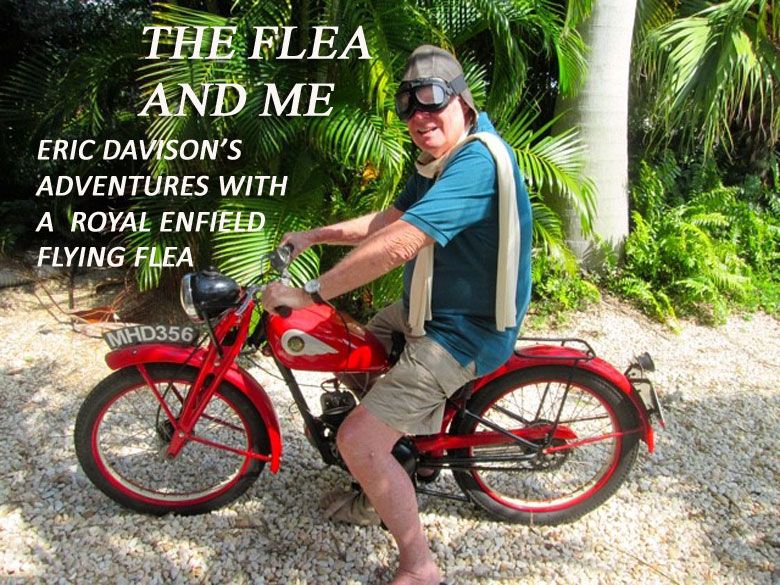
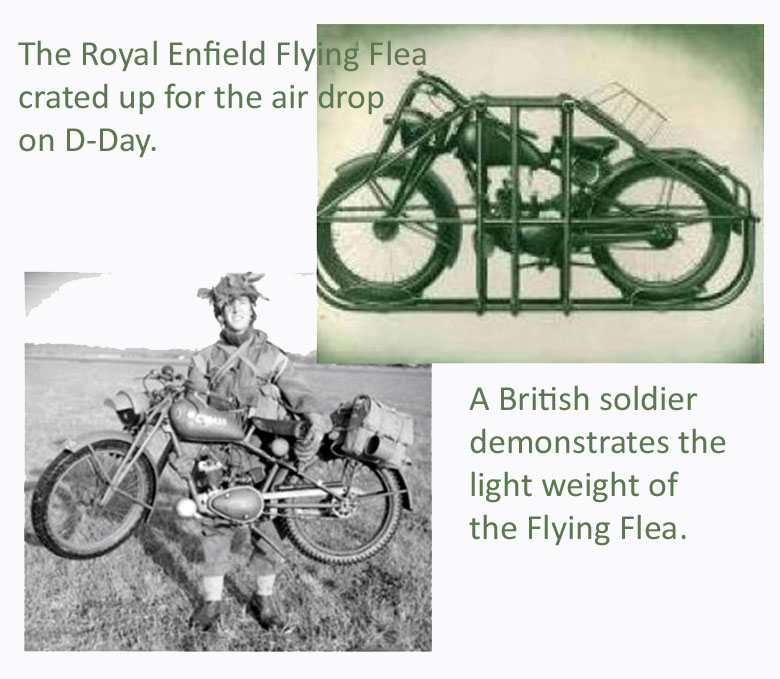
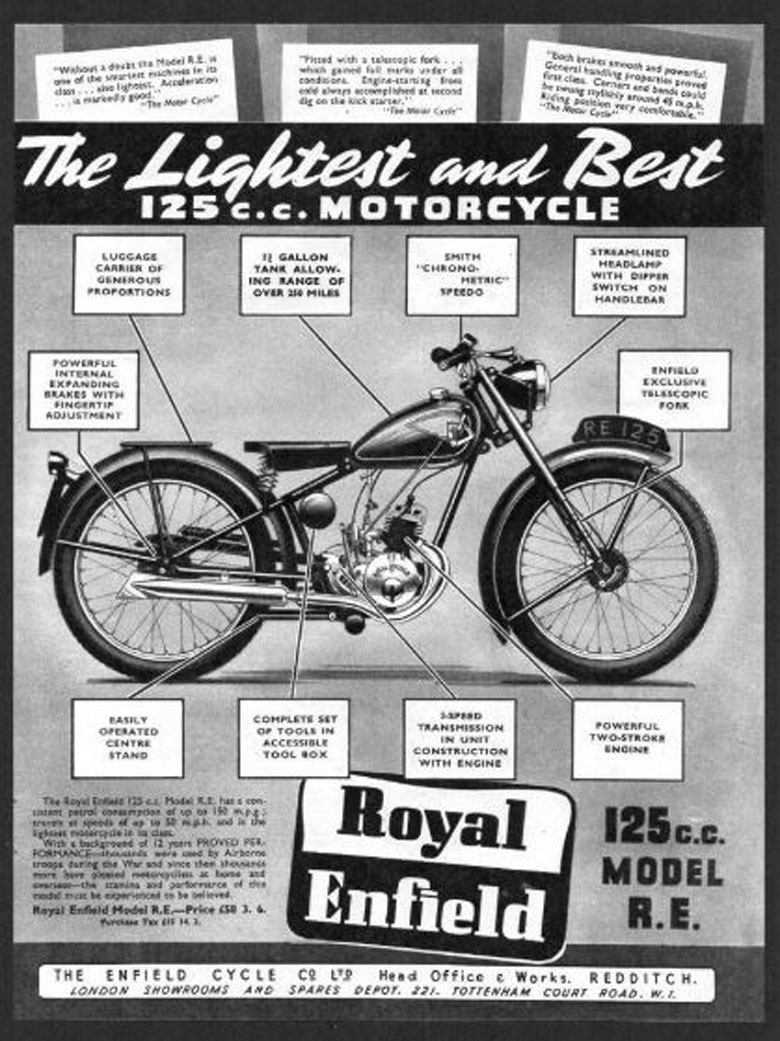
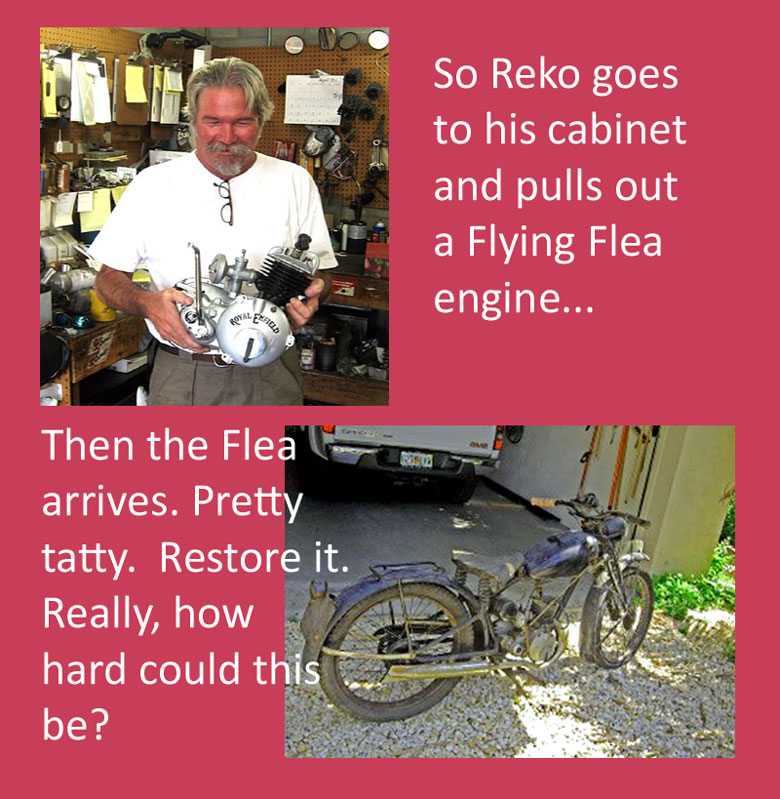
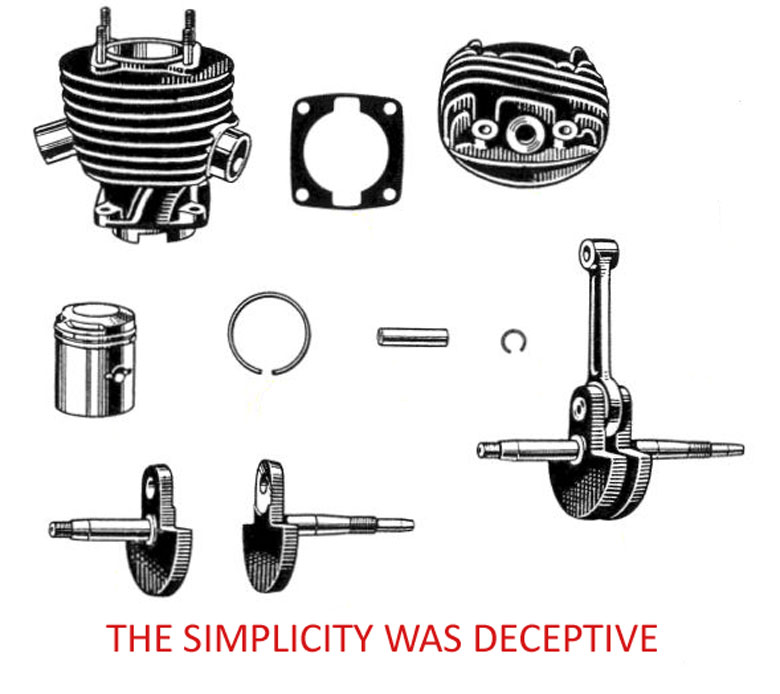
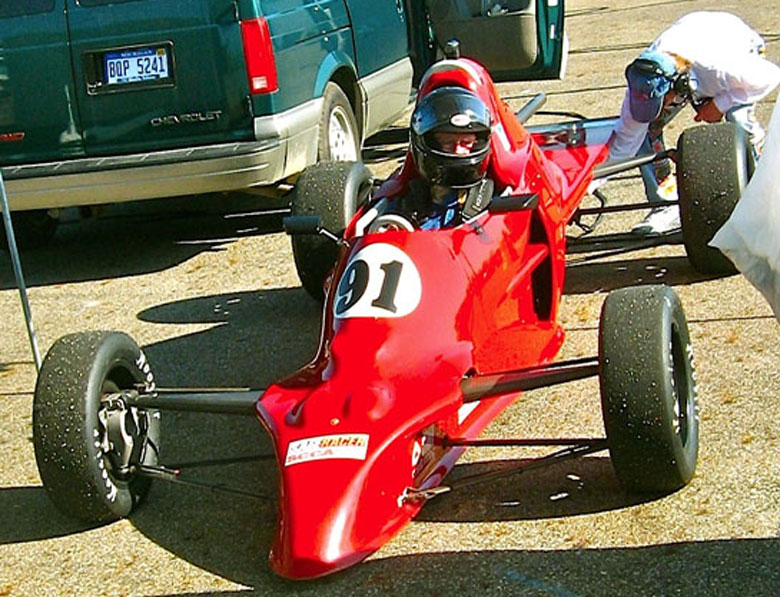
Eric, I really enjoy the story. What a wonderful bike.
I also remember your MG. I loved that car.
Fun story–
Makes me long for my old Velocette
those were sweet motorbikes !
Jim sitz
Hi, Eric,
Still playing with things with wheels, I see. Great project, can’t wait to see the outcome.
Earl